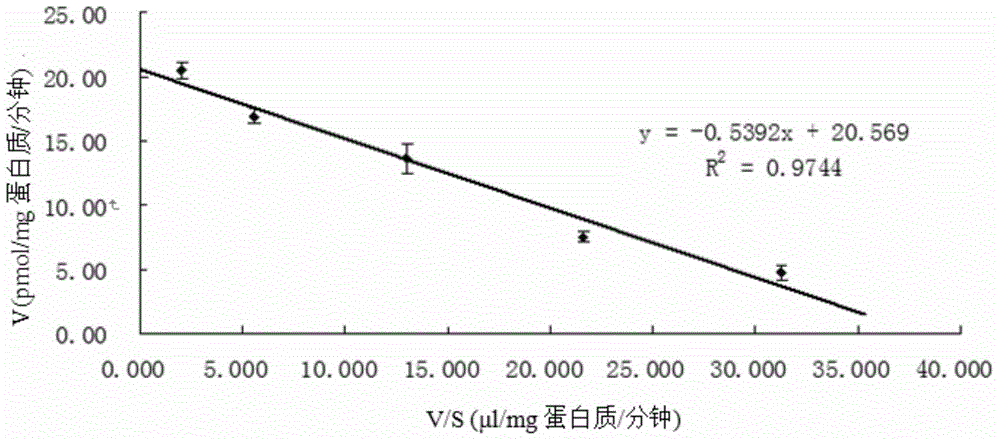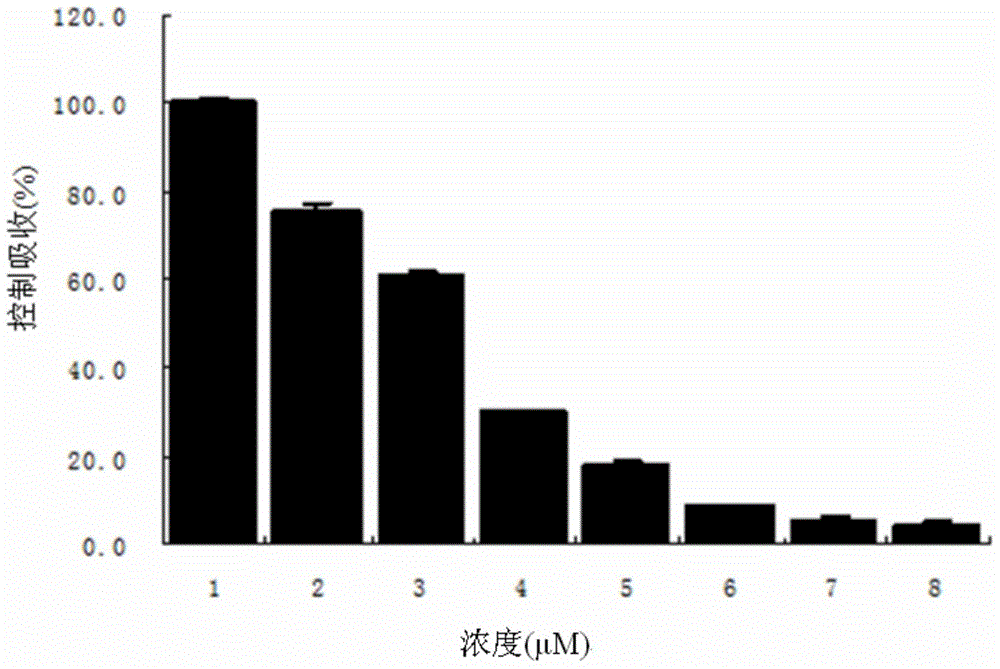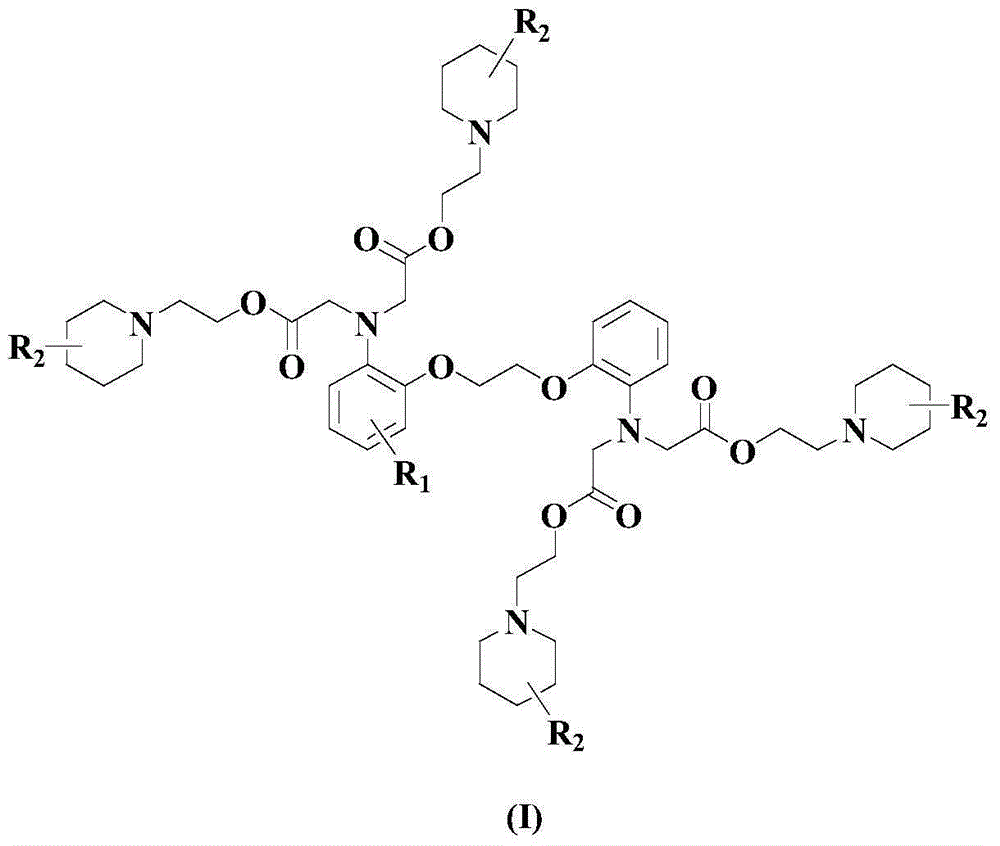Novel calcium-ion selective chelating agent and preparation method and application thereof
A calcium ion, selective technology, applied in chemical instruments and methods, organic compound/hydride/coordination complex catalysts, drug combinations, etc. Achieve the effect of good industrial production potential, excellent biological activity, and good yield
- Summary
- Abstract
- Description
- Claims
- Application Information
AI Technical Summary
Problems solved by technology
Method used
Image
Examples
preparation example 1
[0056] Preparation Example 1: Preparation of Catalyst C1
[0057] (1) SBA-15 mesoporous molecular sieves were calcined at 500°C for 40 minutes, and then naturally cooled to room temperature to obtain primary treated molecular sieves;
[0058] (2) placing the primary treated molecular sieve in a water vapor atmosphere at 500° C. for 60 minutes to obtain a secondary treated molecular sieve;
[0059] (3) Add secondary treatment molecular sieve and ionic liquid N,N,N',N'-tetramethyl-N,N'-disulfonic acid propylpropylenediamine bisulfate to an appropriate amount of ethyl acetate (where , the mass of the secondary treatment molecular sieve and N,N,N',N'-tetramethyl-N,N'-disulfonic acid propylpropylenediamine bisulfate is 1:0.4), at 40°C Thoroughly stir and mix for 8 hours, then filter, wash the resulting solid with deionized water 2-3 times, and then vacuum-dry to obtain catalyst C1.
preparation example 2
[0060] Preparation Example 2: Preparation of Catalyst C2
[0061] (1) SBA-15 mesoporous molecular sieves were calcined at 520°C for 30 minutes, and then naturally cooled to room temperature to obtain primary treated molecular sieves;
[0062] (2) placing the primary treated molecular sieve in a water vapor atmosphere at 500°C for 70 minutes to obtain a secondary treated molecular sieve;
[0063] (3) Add the secondary treatment molecular sieve and ionic liquid N,N,N',N'-tetramethyl-N,N'-disulfonic acid propylpropylenediamine bisulfate into an appropriate amount of chloroform (wherein, the The mass ratio of the secondary treatment molecular sieve to N,N,N',N'-tetramethyl-N,N'-disulfonic acid propylpropylenediamine bisulfate is 1:0.5), fully Stir and mix for 6 hours, then filter, wash the resulting solid with deionized water for 2-3 times, and then vacuum-dry to obtain catalyst C2.
preparation example 3
[0064] Preparation Example 3: Preparation of Catalyst C3
[0065] (1) SBA-15 mesoporous molecular sieves were calcined at 550°C for 20 minutes, and then naturally cooled to room temperature to obtain primary treated molecular sieves;
[0066] (2) placing the primary treated molecular sieve in a water vapor atmosphere at 500°C for 80 minutes to obtain a secondary treated molecular sieve;
[0067] (3) Add the secondary treatment molecular sieve and ionic liquid N,N,N',N'-tetramethyl-N,N'-disulfonic acid propyl propylene diamine bisulfate into an appropriate amount of benzene (wherein, the The mass ratio of the secondary treatment molecular sieve to N,N,N',N'-tetramethyl-N,N'-disulfonic acid propylpropylenediamine bisulfate is 1:0.6), fully Stir and mix for 4 hours, then filter, wash the resulting solid with deionized water for 2-3 times, and then vacuum-dry to obtain catalyst C3.
PUM
 Login to View More
Login to View More Abstract
Description
Claims
Application Information
 Login to View More
Login to View More - R&D
- Intellectual Property
- Life Sciences
- Materials
- Tech Scout
- Unparalleled Data Quality
- Higher Quality Content
- 60% Fewer Hallucinations
Browse by: Latest US Patents, China's latest patents, Technical Efficacy Thesaurus, Application Domain, Technology Topic, Popular Technical Reports.
© 2025 PatSnap. All rights reserved.Legal|Privacy policy|Modern Slavery Act Transparency Statement|Sitemap|About US| Contact US: help@patsnap.com



